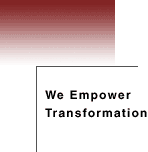

|
||||||||||||||||||||||||||
|
|
 |
|||||||||||||||||||||||||
|
A Planners Perspective |
||||||||||||
|
The program, apart from providing bottom line results to the company, generates some very specific benefits for the corporate planner and planning department. A major concern of strategic planners is that the plans so laboriously developed by them are sometimes not implemented well and there is an implied, sometimes expressed, blame that attaches to the planner, who of course can have no influence on the outcome. Plans are sometimes not bought into emotionally by the line managers and staff who are responsible for bringing them into reality. Often senior management communicates them poorly. Sometimes they are ignored. And very often the middle managers, who are the ones who must implement them, avoid committing to explicit actions to do so. The process we created overcomes many of these issues. The professional corporate planner now has a process that can be assured of causing flexibility rather than inhibiting it; of delivering measurable, bottom-line results. He can have the satisfaction of being able to induce the organization to address the real factors governing performance, not just those addressed in the traditional processes, which are often just symptoms. He can have the people who must do so, acknowledge these real issues and not slide off or flatly deny them. He can cause the line managers to actually make the hard decisions and commit to implementing them. And, perhaps most important in the long term, he can keep control over the follow up mechanisms so that implementation will take place.
BUSINESS PROCESS RE-ENGINEERING (BPR) For example, the results shown in the enclosed case study summaries were generated by re-engineering programs, TQMs and other initiatives which were already begun. Some were of long standing, others recently started. But they were having only modest effect until the middle managers caught fire and demanded (of themselves) that they work. These self same managers used the program to generate the enthusiasm and commitment to succeed. Incidentally, almost all the middle line managers who undertook our program initially cited the existence of these initiatives as the reason that our planning program should be delayed. The advantages of our program for the re-engineer is that the areas where most resistance will arise can be identified accurately and the nature and level of effort needed to bring them into acceptance and support can be seen and provided for. And, of course, the really critical blocks can be addressed cathartically so that those involved will actually change their minds, be driven to change their minds, or at worst, be too ashamed to block.
EMPOWERMENT Interestingly, it also gives managers the mechanism to support, encourage and empower the CEO. By the time the program for the senior team is done, management's power to effect the future of the company has grown very significantly.
COMMITMENT OF MANAGERS The program gives managers, especially middle managers and supervisors who are the true implementers of all change, a safe place in which to commit to the future of the organization, not just intellectually but emotionally; a very difficult thing to do in the ordinary course of business. These commitments are made to the CEO, who leads the process, and are witnessed by their peers, and most importantly, their subordinates. In the final analysis, the achievements that are triggered by the program are driven by this commitment.
INSIGHT INTO THE ORGANIZATION Because of the program's unique diagnostic module, the CEO can look into every unit of his organization, through the eyes of its people, and see, not just the measures of performance as generated by the usual reporting systems, but the culture and motivations underlying and governing that performance. And this can be done at any time. The ability of managers to identify the elements of corporate culture that need changing and to commit to doing so, is one of the key benefits of the program.
EASE OF MANAGEMENT
CORPORATE AGILITY The severing of the organizational knots which occurs during the process, especially during the first four days, permits the CEO to shift corporate direction very rapidly when needed. The momentum built up by the rapid implementation of plans provides the steerage-way for this change of direction. And, the on-line, living action plan, permits the CEO to direct change where it is needed, to impel change where that is necessary and to control its pace, with considerable ease.
BUSINESS CREATIVITY AND INNOVATION Using the techniques and the technology of the program, the CEO can tap into the creativity of his managers. They in turn will be able to engage the creative talents of their people.
MANAGEMENT TEAMS As a by-product of undertaking the program, the senior managers of the organization weld themselves quite naturally into a proactive management team that is centered on the senior executive, who leads the program. In turn, as subordinate units undergo the program, their managers and supervisors also form themselves into teams centered on their leaders.
MANAGEMENT DEVELOPMENT During the program, middle managers and supervisors witness scores, sometimes hundreds, of business decisions being made in full context of the financials, the economy, the competition, the politics and the profusion of other factors that effect the operation of a company. Of particular importance to them is witnessing the CEO's decisions. In the space of a few days they are exposed to as much as might take them as many years of ordinary work. To paraphrase Drucker, no better way of developing managers can be found than having them actively participate and witness in the process of management.
LEADERSHIP Of all the benefits that our clients have reported, the satisfaction, perhaps even the joy, of leading a winning team is probably ranked the most important.
|
||||||||||||
© Copyright, Fitzgerald Associates, www.managementconsultants.com
All rights reserved. Revised:
October 24, 2016